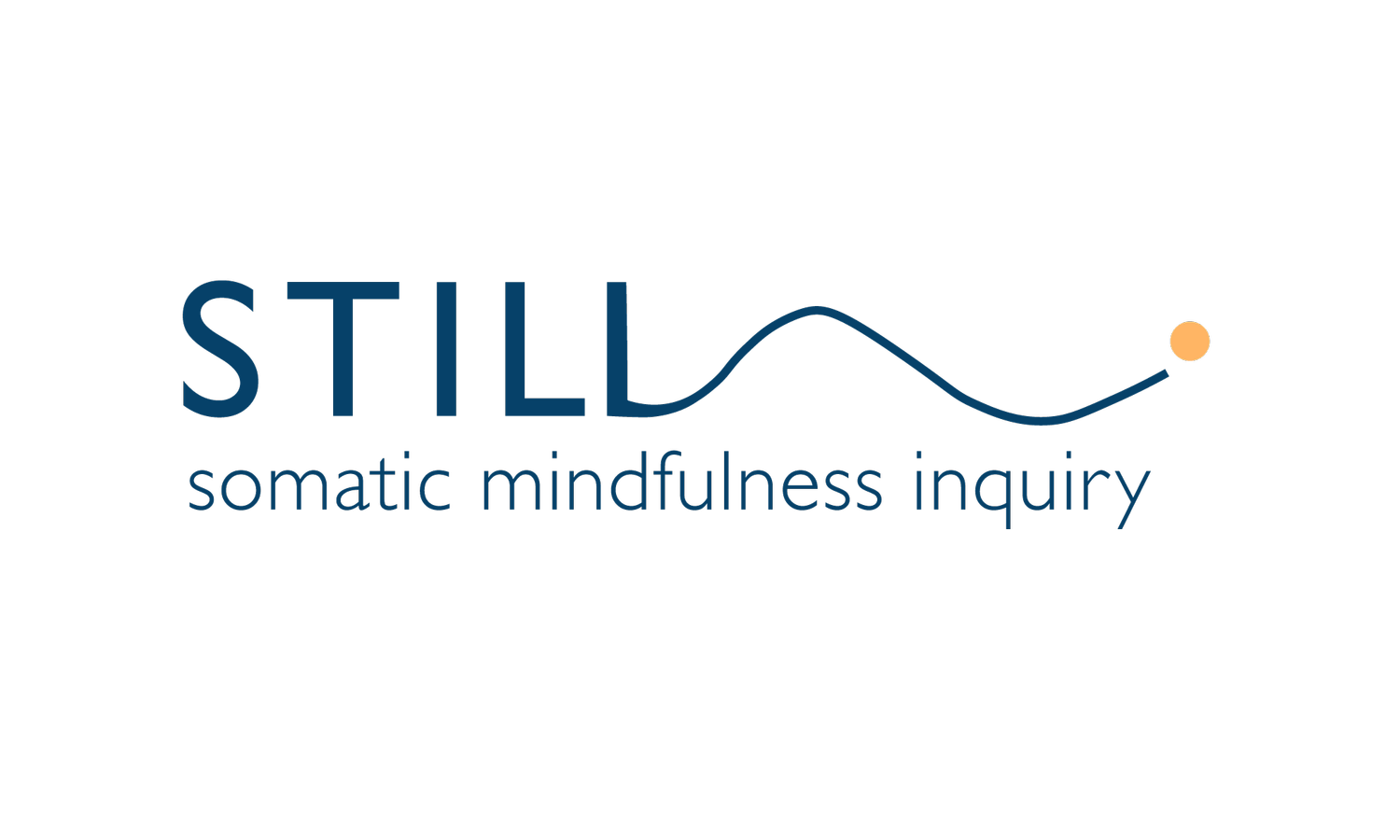Relational Intimacy
Being in survival responses of fight/ flight/ freeze kills intimacy
When we’re in fight, people are scared of us and protect themselves from our anger
When we’re in flight, we’ve emotionally left the building
When we’re in freeze, we’re numb and disconnected
Neuroception is our unconscious assessment of safety and threat
Through somatic mindfulness, we bring our conscious awareness to this unconscious process.
What is happening in my nervous system?
What is happening in their nervous system?
Is this the right time to connect?
What is the most skillful way I can approach this relationship in this moment?
The goal of our nervous system is to keep us safe.
Our nervous system has a history, and our predictive brain has a negativity bias (it notices danger more). We build safety and resilience by having and noticing (through direct perception) experiences of safety.
We have no access to compassion in fight/ flight/ freeze. To be in connection within or in relationship with others, the first priority is to come back into emotional regulation.
Any of the practices that bring us back into the present moment will help. Offer yourself unconditional support and kindness from a grounded steadiness in this moment.
Timeouts
Trauma survivors, when flashing back, can easily lose control to the outer critic and say deeply wounding things to each other. Timeouts can help us avoid blowing up our relationships. From therapist Pete Walker.
Recognize the signs of being activated and take timeouts to stop the bleeding caused by a critic on the rampage.
Things said in the heat of activation can wound deep and engrave themselves in the psyche of the other in deeply trust destroying ways.
We agree that any of us can call a timeout whenever we feel too triggered to be lovingly confrontive, or are experiencing the other as flashing back into being overly aggressive.
Timeouts can range from one minute to 24 hours depending on how long it takes either or both people to achieve good enough flashback management.
Step One is to build resilience
Commit to an ongoing mindfulness practice of regulation. Listen to guided practices on apps like Insight Timer
Become familiar with energy and sensations in your body, recognize emotional flashbacks, and practice how to work with them.
Learn effective tools to quickly regulate when you need it: cyclic sighing; tap on the forehead; put an image in a frame and trace the space outside; hold your hands
Step Two is more accurate neuroception
Do a slow-motion walk through and replay a previous situation or argument, visualizing each step while using tools to regulate before you move on.
What was happening in my nervous system and in their nervous system? How do I know? Is it a look on their face? Tone of voice? Body language? Words they said?
Pause here and look at the images and words - use tools like tapping and tracing. You may have to do this several times until it doesn’t feel as threatening. You are witnessing something that happened in the past. You are safe here in this moment.
Work with the sensations and energies in your body - locate and describe, mining.
When you’re feeling more regulated, come back to neuroception as a witness. What was happening in my nervous system and in their nervous system?
Do cyclic sighing or other regulating practices.
Step Three is to make a plan for staying regulated and connected in the future
Do a slow-motion walk through again, bringing in your insights around nervous system dysregulation (yours and theirs).
What can you do to prepare for the next time this might arise?
Somatic mindfulness gives us advance notice so we can intervene sooner to regulate ourselves through reliable practices like cyclic sighing
As we regulate ourselves, we can bring our attention to their nervous system
We can predict what might activate survival responses in ourselves, and in the other person, and work with what activates us before we engage
Plan for an anchor to the present moment, like remaining aware of breath
We don’t have to keep replaying the same harmful pattern over and over. Is this a relationship where you can talk about the process or is this all on you? Can you agree to call a timeout to emotionally regulate if either is feeling dysregulated?
Assess and strategize when you feel regulated and strong. We want to be connected. We can learn to recognize sooner what takes us out of connection internally and in our relationships. We can work with this.
Join us for our Sunday free community class to explore and practice with supportive people.
